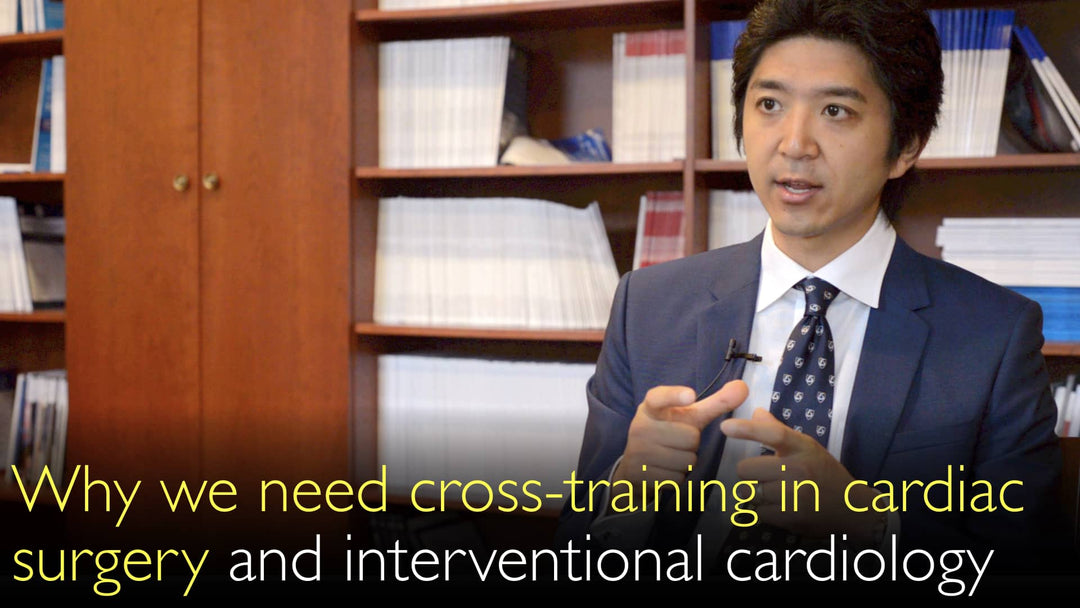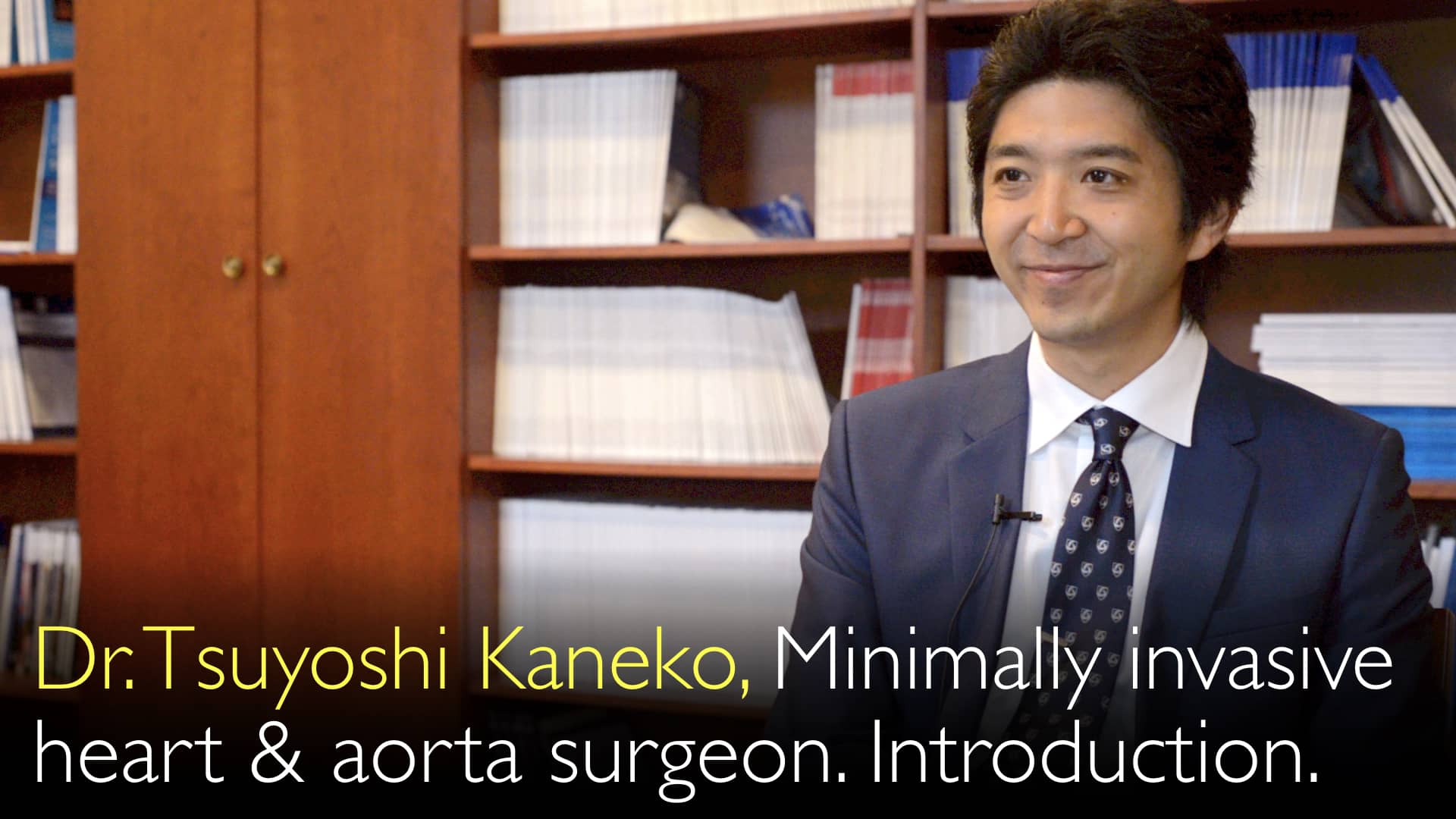Le Dr Tsuyoshi Kaneko, MD, expert de renom en chirurgie cardiaque et en cardiologie interventionnelle, souligne l’importance cruciale d’une formation croisée pour les spécialistes cardiaques d’aujourd’hui. Il décrit la convergence des techniques chirurgicales et par cathéter, en insistant sur le fait que comprendre la perspective des deux disciplines est plus précieux que la maîtrise technique seule. Cette approche multidisciplinaire, défendue par feu le Dr Michael J. Davidson, MD, stimule l’innovation et garantit que les patients bénéficient des soins les plus complets dispensés par une équipe cardiaque unifiée.
La convergence de la chirurgie cardiaque et de la cardiologie interventionnelle : une nouvelle ère dans le traitement cardiaque
Aller à la section
- Pourquoi la chirurgie cardiaque et la cardiologie fusionnent
- La vision du Dr Michael J. Davidson, MD
- Avantages de la formation croisée au-delà des compétences techniques
- La puissance d'une équipe cardiaque multidisciplinaire
- L'avenir du traitement cardiaque et de l'innovation
- Le Fellowship Dr Michael J. Davidson pour l'innovation cardiaque
Pourquoi la chirurgie cardiaque et la cardiologie fusionnent
La chirurgie cardiaque et la cardiologie interventionnelle, deux disciplines en pleine expansion, convergent désormais. Selon le Dr Tsuyoshi Kaneko, MD, cela marque un retour vers une approche médicale plus intégrée. Historiquement, la chirurgie générale englobait un large éventail d'interventions. Avec le temps, ces pratiques se sont fragmentées en spécialités cloisonnées, comme la chirurgie cardiaque et la cardiologie interventionnelle.
L’émergence des dispositifs de transplantation a été le principal moteur de ce rapprochement. Ces technologies innovantes permettent aux médecins d’opérer des patients à haut risque par des techniques mini-invasives. Comme le souligne le Dr Tsuyoshi Kaneko, MD, la frontière entre une « chirurgie cardiaque mini-invasive » et une « procédure de cardiologie interventionnelle maxi-invasive » s’est considérablement estompée.
La vision du Dr Michael J. Davidson, MD
Feu le Dr Michael J. Davidson, MD, fut un pionnier de la formation croisée entre ces deux spécialités. Sa vision, tournée vers l’avenir et centrée sur le patient, anticipait un nouveau type de spécialiste cardiaque pour les soins cardiovasculaires de demain.
Le Dr Davidson défendait l’idée qu’un chirurgien cardiaque moderne devait aussi maîtriser les compétences de la cardiologie interventionnelle. Cette philosophie ne visait pas seulement l’acquisition de nouvelles techniques, mais une compréhension globale des cardiopathies sous différents angles. Le Dr Tsuyoshi Kaneko, MD, a suivi cette voie en se formant au laboratoire de cathétérisme après sa spécialisation en chirurgie cardiaque, adoptant ainsi cette double perspective.
Avantages de la formation croisée au-delà des compétences techniques
Si l’acquisition de compétences techniques en chirurgie à cœur ouvert et en cathétérisme cardiaque est essentielle, le Dr Tsuyoshi Kaneko, MD, estime que la plus grande valeur réside ailleurs. Le principal atout de la formation croisée est de développer la vision des deux spécialités. Un médecin capable de penser comme un chirurgien et un cardiologue peut appréhender l’intégralité du parcours de soin du patient.
Cette double perspective permet d’anticiper les futures innovations en matière de traitement cardiaque et favorise une pensée « hors des sentiers battus », indispensable pour faire progresser le domaine. Alors que de nombreux stagiaires se concentrent sur les aspects techniques, le Dr Tsuyoshi Kaneko, MD, insiste sur l’importance de partager les philosophies fondamentales des différentes spécialités médicales, clé d’une véritable innovation.
La puissance d'une équipe cardiaque multidisciplinaire
Cette convergence profite directement aux patients grâce à une approche d’équipe multidisciplinaire. Plutôt que d’être orientés vers une seule spécialité, les patients sont évalués par une équipe cardiaque unifiée, associant l’expertise des chirurgiens cardiaques et des cardiologues interventionnels.
Le Dr Anton Titov, MD, et le Dr Kaneko s’accordent à dire que la dissolution de ces cloisonnements traditionnels améliore les résultats pour les patients. Le « silo de traitement cardiaque » fusionné garantit que les décisions thérapeutiques sont prises dans l’intérêt du patient, et non en fonction du service consulté initialement. Ce modèle collaboratif est désormais la référence pour les soins cardiaques complexes.
L'avenir du traitement cardiaque et de l'innovation
La fusion de la chirurgie cardiaque et de la cardiologie interventionnelle façonne l’avenir des soins cardiaques. Le développement de nouveaux dispositifs de transplantation pour les valves et autres problèmes structurels en est une conséquence directe. Cette évolution exige une transformation profonde de la formation des futurs médecins.
Les programmes de formation devront eux-mêmes fusionner pour préparer la nouvelle génération de spécialistes cardiaques. Ces médecins hybrides, capables de percevoir des solutions invisibles aux yeux des spécialistes d’une seule discipline, seront naturellement innovants. Ils joueront un rôle clé dans le développement des prochaines technologies de rupture en médecine cardiovasculaire.
Le Fellowship Dr Michael J. Davidson pour l'innovation cardiaque
Pour honorer cette vision et soutenir cette nouvelle génération d’innovateurs, le Fellowship Dr Michael J. Davidson pour l’innovation cardiaque a été créé. Comme l’explique le Dr Tsuyoshi Kaneko, MD, son objectif est d’encourager la « pensée hors des sentiers battus ». Il constitue un hommage vivant aux idées novatrices du Dr Davidson sur la formation transdisciplinaire.
Ce fellowship vise à accompagner les médecins souhaitant combler le fossé entre les spécialités, en leur offrant les ressources et l’environnement nécessaires pour développer la double perspective défendue par le Dr Davidson et le Dr Kaneko. Ainsi, son héritage continuera de guider les avancées en traitement cardiaque pour les années à venir, au bénéfice d’innombrables patients à travers le monde.
Transcript intégral
Dr. Anton Titov, MD: Vous avez collaboré avec le Dr Michael J. Davidson, MD, fervent défenseur de la formation croisée en cardiologie endovasculaire et en chirurgie cardiaque.
Dr. Anton Titov, MD: Vous avez récemment rédigé une introduction très émouvante pour le Fellowship itinérant Dr Michael J. Davidson pour l'innovation cardiaque, intitulée « Thinking Outside the Box » [Penser hors des sentiers battus].
Dr. Anton Titov, MD: Quelle est l’idée derrière la formation croisée en cardiologie endovasculaire et en chirurgie cardiaque ?
Dr. Tsuyoshi Kaneko, MD: Tout à fait. C’est une question cruciale, car les domaines de la cardiologie endovasculaire et de la chirurgie cardiaque évoluent rapidement et convergent à nouveau.
Autrefois, la chirurgie générale couvrait tout : chirurgie abdominale, mammaire, endocrinienne, cardiaque, pulmonaire, mais aussi urologie, neurochirurgie, ORL et orthopédie. Tout relevait de la chirurgie, avant que ces disciplines ne se dispersent en spécialités distinctes.
Aujourd’hui, alors que les sous-spécialités chirurgicales progressent, nous assistons à leur convergence. Dans notre domaine, la chirurgie cardiaque, les nouveaux dispositifs de transplantation ont véritablement fusionné les spécialités de la chirurgie cardiaque et de la cardiologie interventionnelle.
Nous opérons désormais des patients à haut risque avec ces dispositifs. Je me demande parfois si nous pratiquons une chirurgie cardiaque mini-invasive ou une procédure de cardiologie interventionnelle maxi-invasive. La cardiologie endovasculaire et la chirurgie cardiaque ne font plus qu’un.
Cela entraîne la fusion des domaines et, par conséquent, celle des programmes de formation. Nous devons former des chirurgiens cardiaques qui possèdent également des compétences en cardiologie interventionnelle.
Telle était la vision du Dr Michael J. Davidson. J’ai suivi son exemple en me formant au laboratoire de cathétérisme après ma spécialisation en chirurgie cardiaque, afin d’embrasser ces deux perspectives.
Acquérir des compétences techniques dans les deux spécialités est important : apprendre à réaliser une chirurgie à cœur ouvert et un cathétérisme cardiaque. Mais le plus important, selon moi, est de comprendre la vision de chaque spécialité.
Je peux penser en chirurgien cardiaque et en cardiologue, et ainsi anticiper les prochaines étapes. C’est cela qui favorise une pensée hors des sentiers battus pour le traitement cardiaque. C’est l’élément clé.
Beaucoup de médecins se concentrent sur l’aspect technique : apprendre le cathétérisme cardiaque ou la chirurgie cardiaque. Pour moi, l’essentiel est de partager les visions des différentes spécialités médicales, afin d’envisager les innovations futures.
Dr. Anton Titov, MD: Je pense que c’est tout l’objet de la création de ce nouveau fellowship à la mémoire du Dr Michael J. Davidson, MD. Il s’agit aussi de favoriser une évaluation multidisciplinaire des patients, plutôt que de les cloisonner dans une spécialité médicale ou chirurgicale.
Dr. Tsuyoshi Kaneko, MD: Absolument ! Les silos de la chirurgie cardiaque et de la cardiologie interventionnelle fusionnent. Deux spécialités distinctes deviennent un grand silo de traitement cardiaque.





